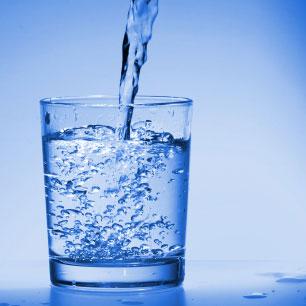
You know you should be drinking eight glasses of water a day, but what kind?
Chlorine is by far the most widely used solution for removing bacteria and viruses from municipal water supplies. Your tap water may not be as innocuous as you think it is. Any number of harmful chemicals, heavy metals, and infectious agents may be dissolved in it.
What We Really Know About Chlorine
As a strong oxidizing agent, chlorine is cheap, effective, and convenient for disinfecting large volumes of water and preventing the spread of waterborne diseases like cholera, typhoid, and dysentery.
Chlorine is extremely reactive and bonds with other substances readily. It breaks the chemical bonds of the molecules in pathogens such as bacteria and viruses, essentially deactivating them. This is certainly an efficient method for getting rid of microorganisms, but here’s the rub. Chlorine is not picky about which microorganisms it destroys. There is enough residual chlorine present in tap water to kill the friendly microorganisms in your gut, too. These are the same organisms you are trying to cultivate when you take probiotics.
Showering, bathing, and swimming in chlorinated water also puts you at risk. As chlorine evaporates out of the water, it is absorbed through the skin and inhaled into the lungs, subsequently affecting the skin, hair, eyes, and respiratory system.
The fact that chlorine is such a sharing chemical gives rise to the second problem. Chlorine enthusiastically swaps molecules with the organic compounds in water to form trihalomethanes. Trihalomethanes, or THMs, are just as scary as they sound and include chemicals like chloroform, bromoform, and dichlorobromethane. Even in small amounts, these byproducts are all carcinogenic.
Numerous studies have shown a link between the regular consumption of chlorinated tap water and the occurrence of bladder and rectal cancers as well as an increased risk of miscarriage. In a 1992 study published in the American Journal of Public Health, it was estimated that 9 percent of bladder and 18 percent of rectal cancers are related to the long-term consumption of high levels of hydrocarbons in chlorinated water. Annually, this translates to more than 20,000 new cases. Not only does chlorine create dangerous byproducts, but it is extremely acidic, too. Cancer thrives in acidic conditions.
Is Chlorine a Necessary Evil?
While we have to give chlorine grudging thanks for saving us from infectious agents, it can be compared to the wrapper on a loaf of bread. It serves beautifully as a protective mechanism, but you don’t want to consume it.
The first step in limiting chlorine exposure is filtering your drinking water at the point of entry. Whole house filters and shower filters are other options. To learn which filters are the best at keeping you and your family safe, see our section on Water and Water Filters.
From Dr. Deborah's Desk
I have encouraged all my patients to filter the chlorine out of their water since I read the 1992 Public Health article about fifteen years ago. Tap water has been well cleaned but it’s not suitable for drinking as it is. Disposable plastic water bottles are not a good solution, for many reasons, but luckily there are many kinds of water filters with one to fit every budget.
There is even an absolutely free way to remove chlorine. In our county, there is a public spring where you can fill water bottles for free, look to see if there is a spring in your area. Or you can clean your tap water yourself. Fill a glass water bottle, half gallon or even gallon sized. Leave it open to the air for 24 hours: the chlorine evaporates. A little cumbersome but definitely affordable. For greater convenience, check out our other water filter options in the store.
